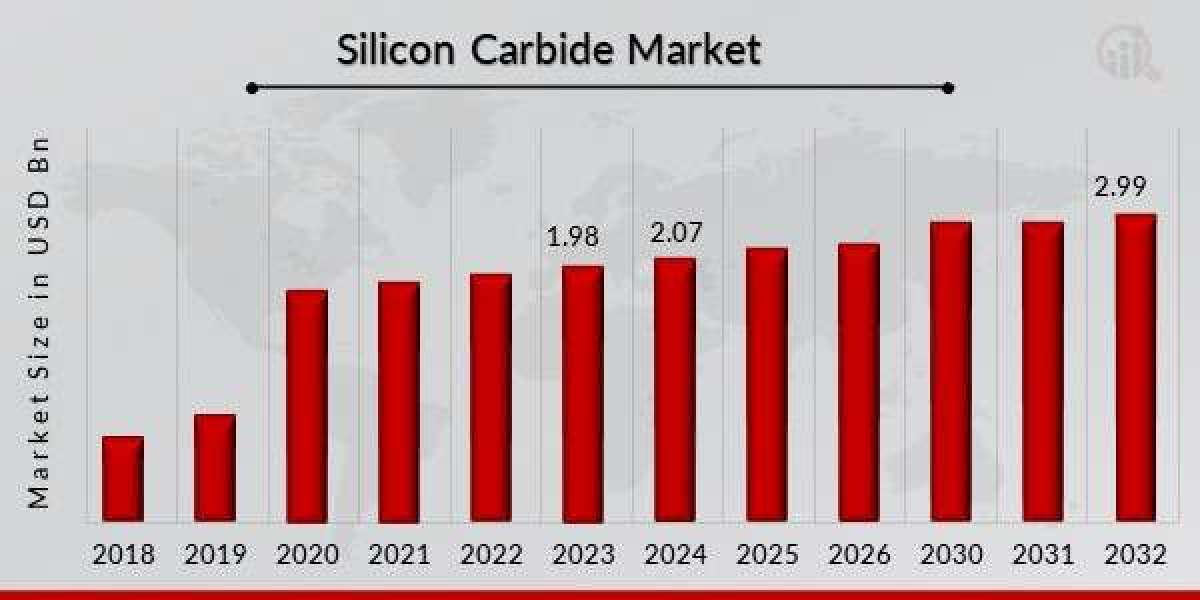The silicon carbide market has been expanding steadily in recent years owing to its remarkable physical and chemical properties that enable its usage in multiple industries. Silicon carbide, also known as carborundum, is a compound of silicon and carbon with superior hardness, high thermal conductivity, low thermal expansion, and excellent resistance to corrosion, wear, and abrasion. These unique features make it an ideal material for a variety of applications, especially in industries that demand performance under harsh operating conditions.
One of the major driving factors behind the growth of the silicon carbide market is its widespread adoption in the power electronics sector. Silicon carbide-based semiconductors are increasingly replacing traditional silicon-based devices in high-voltage applications due to their ability to withstand higher temperatures, voltages, and frequencies. The automotive industry is one of the key end-users in this regard, as electric vehicles (EVs) continue to dominate global market trends. Silicon carbide devices help improve powertrain efficiency, reduce weight, enhance battery range, and enable compact designs in EVs. Furthermore, the push towards carbon neutrality and energy-efficient systems has led to increased investments in wide bandgap semiconductor research, supporting the growth trajectory of silicon carbide materials.
Additionally, the renewable energy sector has emerged as a significant consumer of silicon carbide due to its benefits in solar inverters, wind turbine converters, and other power conversion systems. As global energy policies continue to support the development of green and renewable energy sources, the demand for silicon carbide-based power devices is expected to rise considerably. They ensure efficient power management, reduced energy losses, and improved overall performance in solar photovoltaic systems, which are expanding rapidly in both developing and developed economies.
The silicon carbide market is also witnessing strong demand in the abrasives and refractory segments. Its extreme hardness makes it suitable for manufacturing grinding wheels, sandpapers, and cutting tools used in metal fabrication, stone processing, and construction sectors. In addition, silicon carbide is widely used in refractories for furnaces, kilns, and incinerators due to its high thermal resistance and ability to retain mechanical strength at elevated temperatures. Industries such as steel, ceramics, glass, and non-ferrous metal manufacturing heavily rely on silicon carbide-based refractory materials for reliable operations under extreme thermal stress.
Moreover, the electronics and telecommunication sectors are integrating silicon carbide for producing high-performance components such as diodes, transistors, and MOSFETs. These components are used in high-frequency and high-power applications like radio frequency amplifiers, wireless communication infrastructure, and aerospace systems. With the continuous rollout of 5G networks and advancements in satellite communication, the market potential for silicon carbide-based electronics is projected to increase significantly in the coming years.
Another notable application area of silicon carbide is its role as a structural material in advanced ceramics. Its light weight combined with high strength makes it useful in manufacturing armor, wear plates, and components for aerospace and defense industries. As military modernization and space exploration missions gain momentum globally, demand for advanced materials like silicon carbide is likely to witness a substantial rise.
The market is segmented based on product type, where black silicon carbide and green silicon carbide are the primary categories. Black silicon carbide is predominantly used in abrasives, refractory, and metallurgical applications, while green silicon carbide, with its higher purity, is extensively utilized in electronics and high-performance ceramics. Both segments are experiencing healthy demand due to the rise in industrial production, manufacturing activities, and technological innovations that require materials with high durability and efficiency.
Geographically, the Asia-Pacific region dominates the silicon carbide market, driven by rapid industrialization, urban infrastructure development, and the booming automotive and electronics industries in countries like China, Japan, South Korea, and India. China, in particular, has a significant market share due to its robust manufacturing base, government incentives for EV production, and investments in renewable energy. North America and Europe are also key markets owing to the strong presence of leading automotive manufacturers, advanced research facilities, and growing adoption of electric vehicles and clean energy technologies



